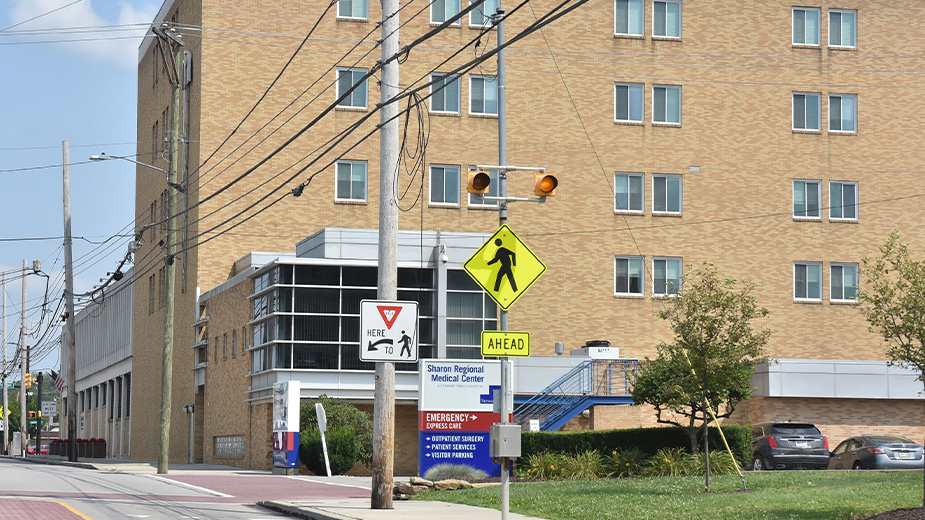Belmont Pines Helps Troubled Youths Find ‘Big Breakthrough’
LIBERTY TOWNSHIP – In psychiatry, one of the most important aspects of therapy is the perceptions of those involved. At Belmont Pines Hospital, a psychiatric hospital for youth, getting both patients and their parents to buy in is crucial to treatment.
“You don’t look at what’s wrong with them. You have to look at what’s happened to them,” says Louis Wainwright, director of the residential center at Belmont Pines. “Sometimes parents think, ‘Something’s wrong with my kid.’ That’s not the case. Something’s happened to your child. We can figure out what that is and we can all be part of the solution.”
The process of finding that solution begins the moment a patient walks through the door. A psychiatrist conducts an assessment with the patient and parents to determine the level of service needed for each case.
At Belmont Pines, the four levels of care are outpatient therapy, partial hospitalization, acute care and residential care. The partial hospitalization program has patients in the hospital during the day, while acute and residential treatment keeps them longer – typically seven days for acute and at least 30 days for residential.
Group therapy is an important part of all levels, says Kathleen Sabol, director of performance improvement and social services.
“Adolescents and children tend to work better with each other than with adults, so we use group therapy as a primary mean of intervention,” she says. “We also do work with the family because no one has issues in a vacuum. We work with the family as a way to prepare patients for discharge so they can be successful.”
On the staff’s side, with so many interconnected aspects of treatment and an individualized plan for each patient, team meetings are commonplace. They can range from daily meetings between each department to shift-change meetings between doctors and nurses within a department.
“We have treatment team meetings in all of our areas where we get together and review each case,” says Sam Baharis, Belmont Pines director of acute services. “If someone comes in on Tuesday, we meet on Wednesday to discuss what brought them in and what direction we’re going to take.”
Treatment is almost always multidisciplinary, says Belmont Pines CEO Lisa Cocca. In addition to registered nurses being on site 24/7, the hospital has trauma specialists, nutritionists, tendency specialists and psychiatrists. A pastor also makes routine visits.
“We’re able to handle any emergency that might happen,” Cocca says. “Whether [the patient is] in outpatient or residential or partial hospitalization, there’s always that multidisciplinary team available.”
One of the biggest differences between psychiatry for adults and minors is that adults, for the most part, are there willingly.
“With kids, it’s more, ‘Someone brought me here. I have to be here.’ You get more resistance because they’re externally motivated to be here,” Sabol explains. “Part of our challenge is getting them to motivate themselves and to see why a change is important.”
Reaching that goal, Wainwright adds, ties back into the idea of looking at what’s happened.
“You sometimes have to help kids look retrospectively at where they’ve been,” he says. “You can get them to buy in when you help them realize that things have happened in their lives that they’re not responsible for and that we’re here to help them.”
Having that first breakthrough, many of the Belmont Pines staff members say, is one of the most rewarding parts of their jobs.
“The big breakthrough starts when the person wants it,” says Joseph Farris, one of Belmont Pines’ associate medical directors.
“The time you get some heartfelt thanks, or they say they’re better because of you, is great. When someone tells you made a difference in their life, that’s why I keep doing this.”
Most of the senior staff at Belmont Pines has more than 20 years of experience in youth psychiatry. Over the years, they say, two of the biggest changes are the rise in self-abuse and the role of social media in the lives of children.
“The most common trend is self-abusive behavior. It’s an ‘in’ thing. We see a lot of teenagers, especially girls, come in with cuts on their arms and legs,” says staff psychiatrist Pradeep Mathur.
Baharis notes that many of the problems patients are admitted for haven’t changed much over the years but the rise of the Internet has had a deep impact on their lives.
“We get many kids who have their phone taken and it triggers some suicidal thoughts or behaviors,” he says. “Kids used to get bullied for maybe eight hours a day, go home and get some reprieve. But now it’s now nonstop because of Facebook and Twitter or even texting.”
One of the commonly suggested solutions to cyberbullying is to simply walk away, which for kids isn’t always easy. “It’s more challenging than that because kids are tied to having that kind of contact with the world,” Baharis says.
Belmont Pines has put a large emphasis on getting rid of the stigma that surrounds its industry. About a decade ago, Mathur says, the hospital discussed how to do so at its annual meeting. Since then, both community outreach and education have assumed a prominent place in Belmont Pines’ mission.
“Being in the community makes it known what we do here. We have a good team that goes out and talks about the services we have and what we do,” he says. “It’s a matter of knowing that there’s help available. For a lot of people, the stigma has gone away.”
Pictured: A mural on a hospital wall shows the Belmont Pines campus.
Copyright 2024 The Business Journal, Youngstown, Ohio.



